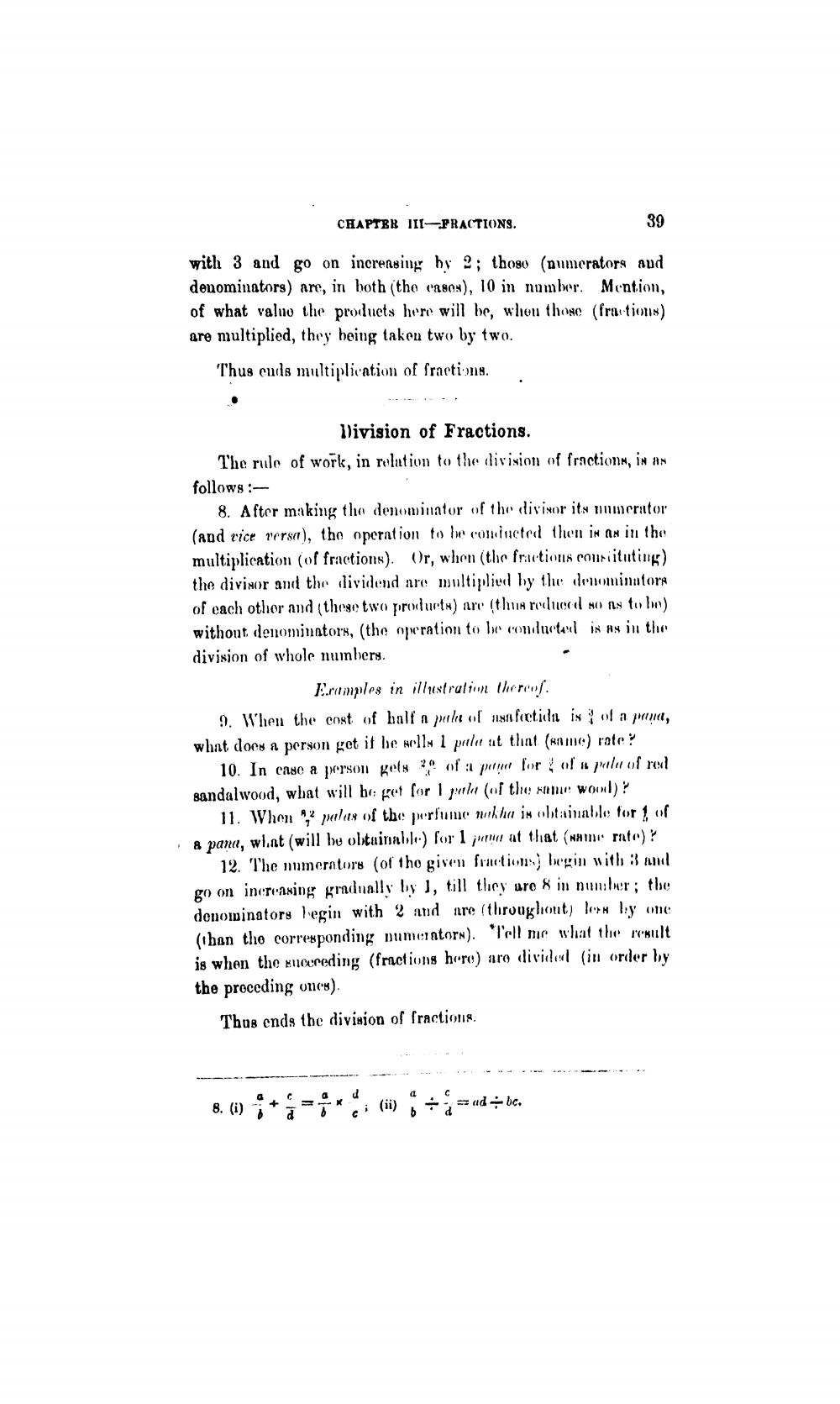________________
CHAPTER
PRACTIONS.
39
with 3 and go on increasing by 2; thoso (numerators and denominators) are, in both (the cases), 10 in number. Mention, of what valno the products here will be, when those (fra-tions) are multiplied, they being takeu two by two.
'Thus cuds multiplication of fractions.
Division of Fractions. The rule of work, in relation to the division of fractions, is an follows:
8. After making the denominator of the divisor its numcritor (and vice versa), the operation to be comincted then in an in the multiplication (of fractions). Or, when the fractions consiituting) the divisor and the dividend are multiplied by the denominutora of cach other and these two produrts) are (thus reduced sons to be without denominators, (the operation to be conducted in as in the division of whole numbers.
Ecumples in illustration thereof. 9. When the cost of half n pah of infection is of a p a, what does a person get it be wolle 1 pole at that (OMC) rate?
10. In case a person gels?" of : pou for of pulu of rol sandalwood, what will be get for 1 perlu (of the manur woul)?
11. When ? palas of the perfume sukha in obtainable for 1 of & pann, wlnt (will be obtainable) for 1 ju at that (naine mnto)?
12. The numerators of the given fractions begin with :3 and go on increasing gradually by 1, till they are 8 in number: the denominators begin with 2 and are throughout) lor liy one (ihan the corresponding pumciators). Tell me what the mult is when the encoreding (fmctions hero) aro divided in order by the proceding ones).
Thus ends the division of fractions.
8. 6) + ) * = ud + bc.




